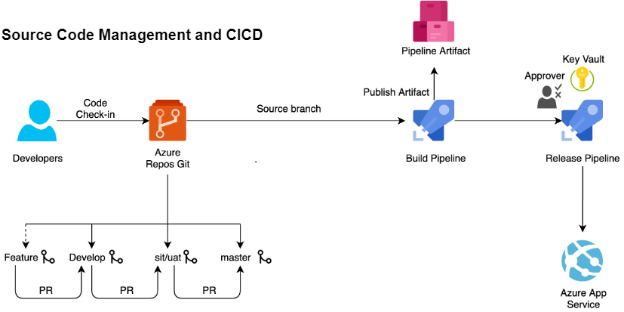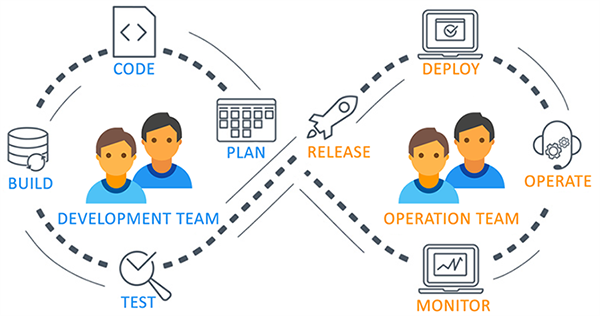Azure DevOps Workflow for .NET Developers
As a .NET developer diving into the world of Azure DevOps, you’re poised to leverage powerful tools and practices to streamline your development workflow. Azure DevOps offers a robust suite of services that enable continuous integration, deployment, and delivery (CI/CD) pipelines, along with integrated version control and collaboration features.
From version control and CI/CD pipelines to automated testing and deployment strategies to cover essential concepts and best practices to help optimize our development process and deliver high-quality applications.
1. Setting Up Version Control with Azure Repos
Begin by setting up Azure Repos to manage your .NET codebase. Azure Repos provides Git repositories with unlimited cloud-hosted private repositories for seamless version control and collaboration.
2. Implementing Continuous Integration (CI) Pipeline
Create a CI pipeline in Azure DevOps to automate the build and testing of your .NET applications. Configure triggers to automatically start builds upon code commits, and integrate with MSBuild for building .NET projects.
3. Automated Testing with Azure DevOps
Integrate unit testing frameworks such as MSTest, NUnit, or xUnit into your CI pipeline. Use Azure Pipelines to run automated tests and generate test reports to ensure code quality and identify issues early in the development cycle.
4. Containerizing .NET Applications with Docker
Utilize Docker to containerize your .NET applications for consistent deployment across different environments. Leverage Azure Container Registry to store and manage Docker images securely.
5. Artifact Management and Release Pipelines
Use Azure Artifacts to manage and version artifacts generated during the build process, such as NuGet packages. Create release pipelines in Azure DevOps to automate deployment to staging and production environments.
6. Infrastructure as Code (IaC) with Azure DevOps
Implement Infrastructure as Code (IaC) using Azure Resource Manager (ARM) templates within Azure DevOps. Define and provision Azure resources programmatically, ensuring consistent and reproducible environments.
7. Monitoring and Logging Integration
Integrate Azure Monitor and Application Insights for monitoring application performance, health, and usage. Configure logging frameworks like Serilog for centralized logging and diagnostics.

Conclusion
Azure DevOps provides .NET developers with a comprehensive suite of tools and services to enable modern DevOps practices. By following the end-to-end workflow outlined in this guide—from version control and CI/CD pipelines to automated testing and infrastructure as code—you can optimize development processes, increase collaboration, and deliver high-quality .NET applications efficiently.
Remember, embracing DevOps is not just about adopting tools; it’s a cultural shift that emphasizes collaboration, automation, and continuous improvement. Tailor these practices to your project’s specific requirements, and leverage Azure DevOps to accelerate your journey towards mastering DevOps as a .NET developer. Happy coding!
Thank you for reading! Remember, the journey to Azure DevOps is ongoing, and every step you take brings you closer to success.


Leave a Reply
Want to join the discussion?Feel free to contribute!